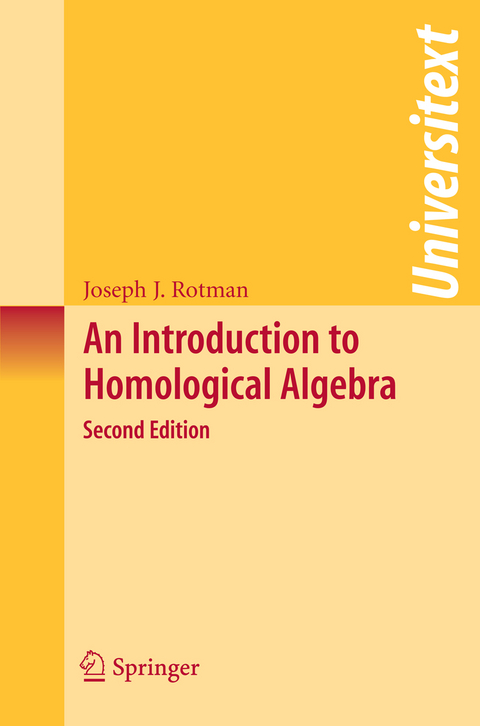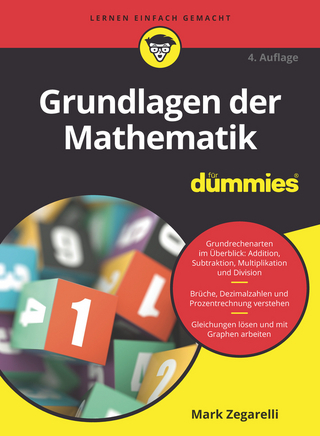An Introduction to Homological Algebra
Springer-Verlag New York Inc.
978-0-387-24527-0 (ISBN)
Homological Algebra has grown in the nearly three decades since the rst e- tion of this book appeared in 1979. Two books discussing more recent results are Weibel, An Introduction to Homological Algebra, 1994, and Gelfand– Manin, Methods of Homological Algebra, 2003. In their Foreword, Gelfand and Manin divide the history of Homological Algebra into three periods: the rst period ended in the early 1960s, culminating in applications of Ho- logical Algebra to regular local rings. The second period, greatly in uenced by the work of A. Grothendieck and J. -P. Serre, continued through the 1980s; it involves abelian categories and sheaf cohomology. The third period, - volving derived categories and triangulated categories, is still ongoing. Both of these newer books discuss all three periods (see also Kashiwara–Schapira, Categories and Sheaves). The original version of this book discussed the rst period only; this new edition remains at the same introductory level, but it now introduces thesecond period as well. This change makes sense pe- gogically, for there has been a change in the mathematics population since 1979; today, virtually all mathematics graduate students have learned so- thing about functors and categories, and so I can now take the categorical viewpoint more seriously. When I was a graduate student, Homological Algebra was an unpopular subject. The general attitude was that it was a grotesque formalism, boring to learn, and not very useful once one had learned it.
Hom and Tensor.- Special Modules.- Specific Rings.- Setting the Stage.- Homology.- Tor and Ext.- Homology and Rings.- Homology and Groups.- Spectral Sequences.
From the reviews of the second edition:"Joseph J. Rotman is a renowned textbook author in contemporary mathematics. Over the past four decades, he has published numerous successful texts of introductory character, mainly in the field of modern abstract algebra and its related disciplines. … Now, in the current second edition, the author has reworked the original text considerably. While the first edition covered exclusively aspects of the homological algebra of groups, rings, and modules, that is, topics from its first period of development, the new edition includes some additional material from the second period, together with numerous other, more recent results from the homological algebra of groups, rings, and modules. The new edition has almost doubled in size and represents a substantial updating of the classic original. … All together, a popular classic has been turned into a new, much more topical and comprehensive textbook on homological algebra, with all the great features that once distinguished the original, very much to the belief [of its] new generation of readers." (Werner Kleinert, Zentralblatt)"The new expanded second edition … attempts to cover more ground, basically going from the (concrete) category of modules over a given ring, as in the first edition, to an abelian category and to treat the important example of the category of sheaves on a topological space. … the exercise at the end of every section, plenty of examples and motivation for the many new concepts set this book apart and make it an ideal textbook for a course on the subject." (Felipe Zaldivar, MAA Online, December, 2008)"This is the second edition of Rotman’s introduction to the more classical aspects of homological algebra … . The book is mainly concerned with homological algebra in module categories … . The book is full of illustrative examples and exercises. It contains many references for further study and also to original sources. All this makes Rotman’s book very convenient for beginners in homological algebra as well as a reference book." (Fernando Muro, Mathematical Reviews, Issue 2009 i)
| Reihe/Serie | Universitext |
|---|---|
| Zusatzinfo | 11 Illustrations, black and white; XIV, 710 p. 11 illus. |
| Verlagsort | New York, NY |
| Sprache | englisch |
| Maße | 155 x 235 mm |
| Themenwelt | Mathematik / Informatik ► Mathematik ► Allgemeines / Lexika |
| Mathematik / Informatik ► Mathematik ► Algebra | |
| ISBN-10 | 0-387-24527-8 / 0387245278 |
| ISBN-13 | 978-0-387-24527-0 / 9780387245270 |
| Zustand | Neuware |
| Haben Sie eine Frage zum Produkt? |
aus dem Bereich




